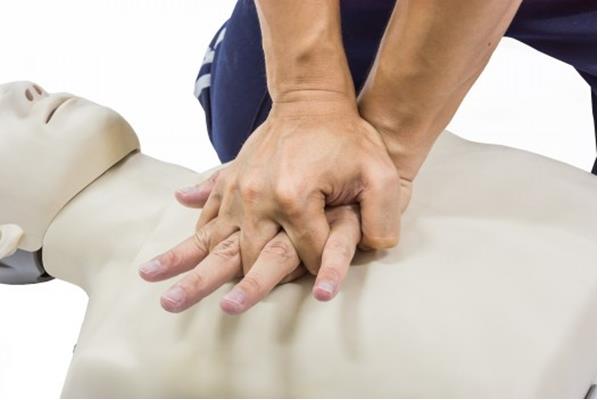|
|

|
|

| Article / Health / Heart | Post Comments |
Importance of giving CPR for Cardiac arrest |
|
| By : Webindia123 Editor , , 13.4.2018 Mail Now | |
Cardiopulmonary Resuscitation or CPR is used to save people suffering a sudden cardiac arrest. It is the most important first-aid step to undertake, for any person who has suffered a sudden cardiac arrest, till emergency medical service arrives. The CPR is performed to pump blood and oxygen to the brain. In cardiac arrest, the heart abruptly stops beating causing loss of consciousness. It can be caused by multiple factors. For example, a drowning person suffers from the lack of oxygen. The blood also undergoes physical changes as well. In salt water, Osmosis makes the blood thicker by pulling water from the bloodstream into the lungs. In fresh water, something different happens, wherein osmosis acts in the opposing direction. As a result, the blood becomes diluted and thinner, red blood cells get destroyed, and electrical activity of the heart gets affected. Both the situations may trigger sudden cardiac arrest in patients, causing the beating of the heart to stop. There are many misconceptions regarding administering of
CPR. It is assumed that a few hard-pressing on the chest and a single round of
mouth-to-mouth brings the victim back to life, usually seen coughing. It is important
to know that CPR may not bring people back to consciousness. It is done to pump
up the blood flow and thereby oxygen to the brain. If the heart is at standstill
due to cardiac arrest, then to restart it one needs to administer an electric
shock.  When you see a person faint or become unconscious gasping for breath, the first thing is to check the pulse or beating of the heart. A person suffering from sudden cardiac arrest will not have a detectable pulse, which means he has only seconds to survive. The next step is to call emergency medical service immediately. Almost simultaneously, the person should begin performing CPR and enact the following steps: - Call out and see if the patient responds - Look at the breathing - Feel for the pulse in the neck if you know how to, with two fingers - Place the patient on his/her back. - Kneel beside the patient on your knees. - At the center of the chest, place the heel of your first hand. - The heel of your second hand should go on the top of the first hand, with fingers of top hand clasping the bottom. - While keeping your arms straight, adjust your body to ensure that the shoulders are directly over your hands and the body. - Start pushing hard and fast with your body weight to put pressure on the chest. Try that the compressions are about two inches deep. - Deliver 120 to 130 compressions per minute. - Don't let go till medical help arrives or you may see clear life signs, such as breathing You should not give up if you think you are unable to administer CPR perfectly. It should always be remembered that any form of CPR is better than no CPR. It is important that the center of the chest is compressed hard and fast, and till the same is being done, you are increasing the chances of saving someone's life. |
|